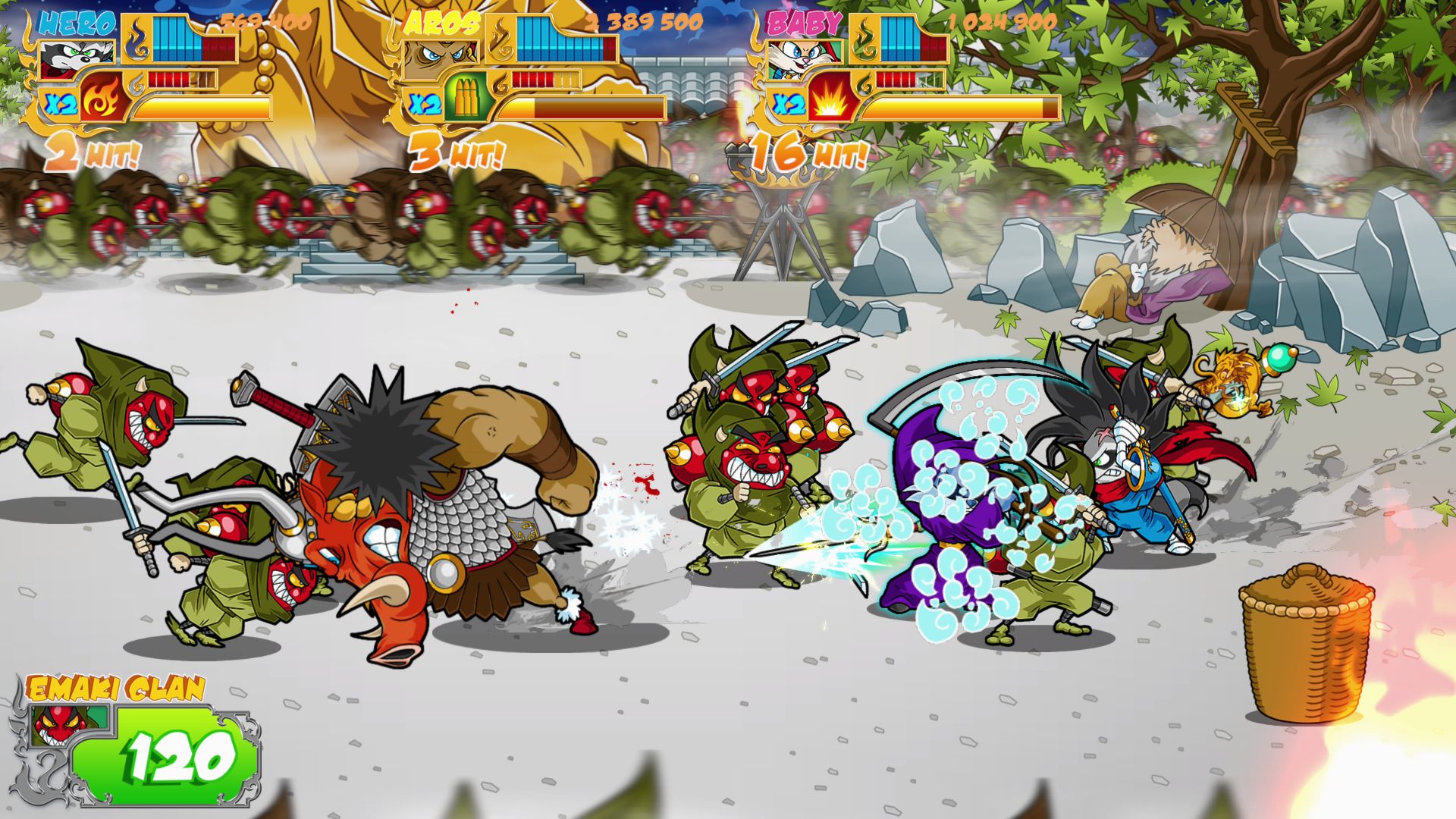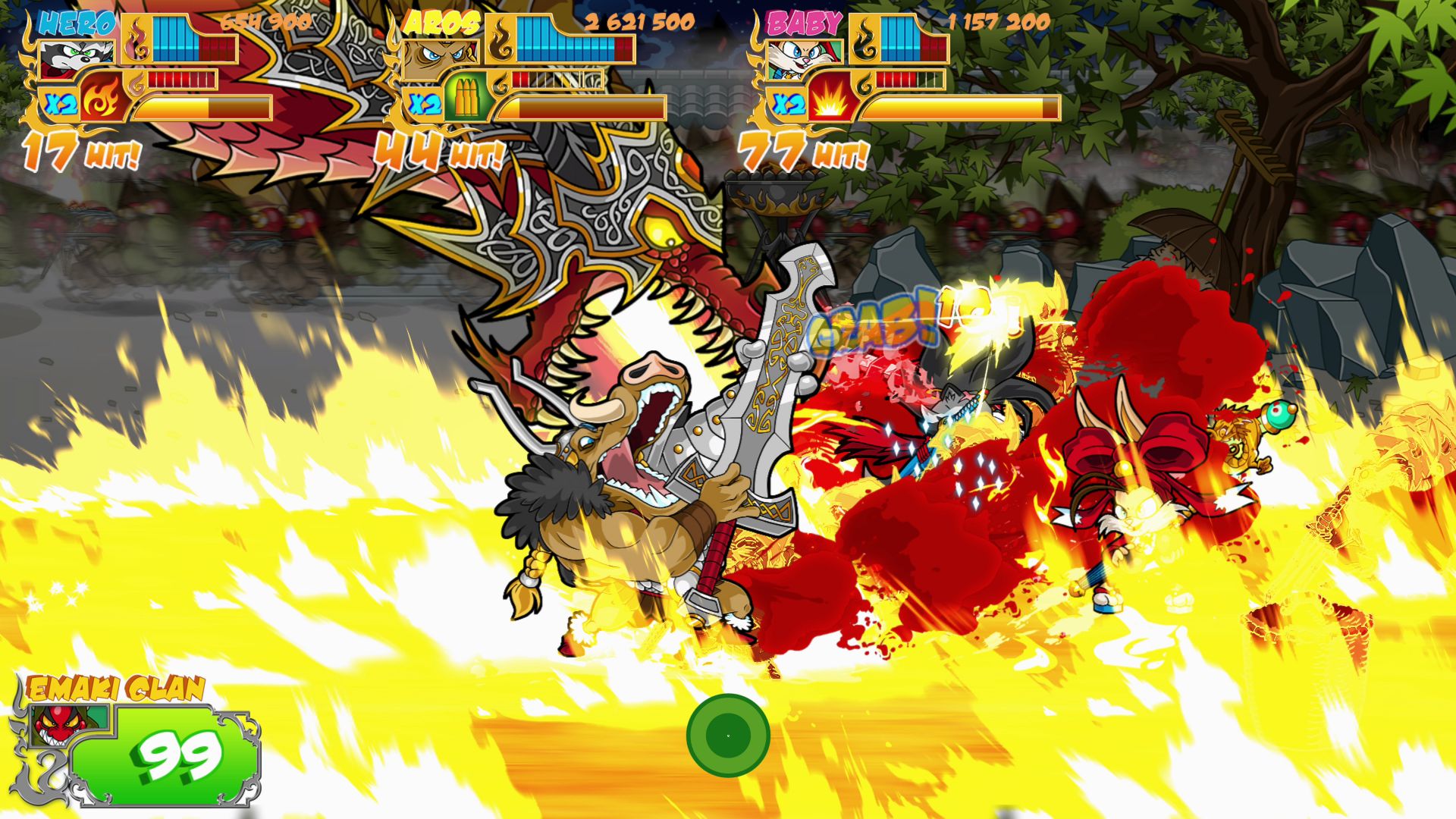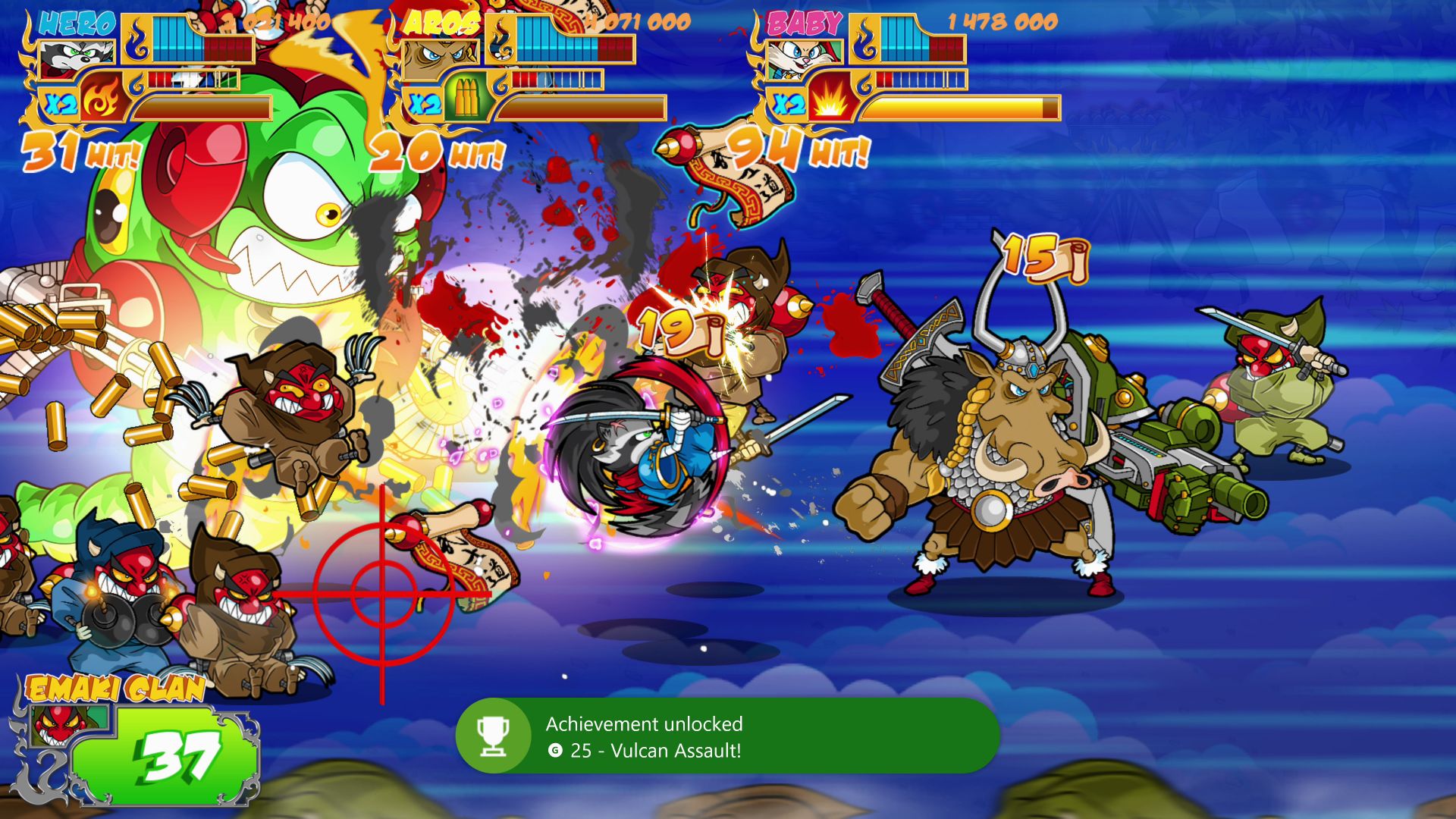
At present, Jitsu Squad offers a campaign with three difficulty levels, an unlockable tag team mode, and a practice mode. Each level consists of several interconnected areas followed by a boss. The bosses are all different animal bad guys such as a snide karasu tengu, a viper lady, and a white tiger. Most deliver fun challenges, though Shade, a boss who must be defeated multiple times in the last level, is a pain when playing solo.
The levels themselves are quite beautiful. Each area utilizes parallax scrolling for depth, and most areas have NPCs performing cute animations in the background too. That visual inventiveness doesn’t apply to the actual level design, however. Nearly every level is just a straight trip from left to right with nothing but fights in between. There’s no interactivity outside of breakable chests and rocks, no collectables to seek, and no variation in level layouts. Classic beat ‘em ups like Double Dragon broke things up with climbing, vertical scrolling, narrow sections, wall hazards to avoid, and more. The recent Shredder’s Revenge also does a great job of mixing up the way that levels play and feel. The only one that feels any different here is a lone surfing level late in the game. That’s a welcome diversion, but the other areas blend together and become repetitive after a while. Enemy repetition is another issue that could’ve been alleviated by adding more palette-swapped enemies (there are hardly any).

Thankfully, local co-op significantly lessens that feeling of repetition – with one big caveat. On the plus side, frantically fighting hordes of monsters is a joy with 2-4 players. The chaotic visual style and effects suit team play quite well. Jitsu Squad doesn’t have specific co-op moves, but the game really is a bit easier (especially at bosses) with a few friends watching your back. Beating the game will unlock the Tag Team option for Story Mode, allowing two players to pick their own pairs of characters and swap them out at will.
The one downside to Jitsu Squad’s co-op is that this game does NOT let players drop out. After starting a game, whether you’re playing solo or with four players, you can’t change characters or players without starting the game over. Most games would let the user reconfirm how many players are present when loading up a save file, but not this one. If you started with four players, you’ll have to either finish with four or just start over – not very convenient.

When we interviewed Jitsu Squad’s developers, their love for beat ‘em ups was obvious. Mixing beat ‘em ups with fighting game elements (including the Marvel vs. Capcom-style announcer) has rarely been done as well as it has here. I didn’t fall in love with this one, alas, mostly because of the repetitive level design, lack of enemy variety, and annoying story. Still, the colorful visuals, stunning effects, and rocking soundtrack by composer Sebastien Romero, not to mention 4 player local co-op, certainly make Jitsu Squad worth a playthrough – preferably with a friend or three. We’ll see how the promised DLC livens the game up whenever it finally comes around.
Jitsu Squad sells for $29.99 digitally on Xbox, PlayStation, and Switch. Physical PlayStation 4, PlayStation 5, and Switch versions are available for $29.99 each. The catchy soundtrack sells for $9.49 on Amazon Music and other storefronts.
Xbox and Steam codes were provided by the publisher and developer for this review.
Verdict
Co-Op Score
Overall
The Co-Op Experience: Up to four players can join up and fight the enemies together. Alternatively there's Tag team mode in which 2 player control two characters each.
Co-Optimus game reviews focus on the cooperative experience of a game, our final score graphic represents this experience along with an average score for the game overall. For an explanation of our scores please check our Review Score Explanation Guide.